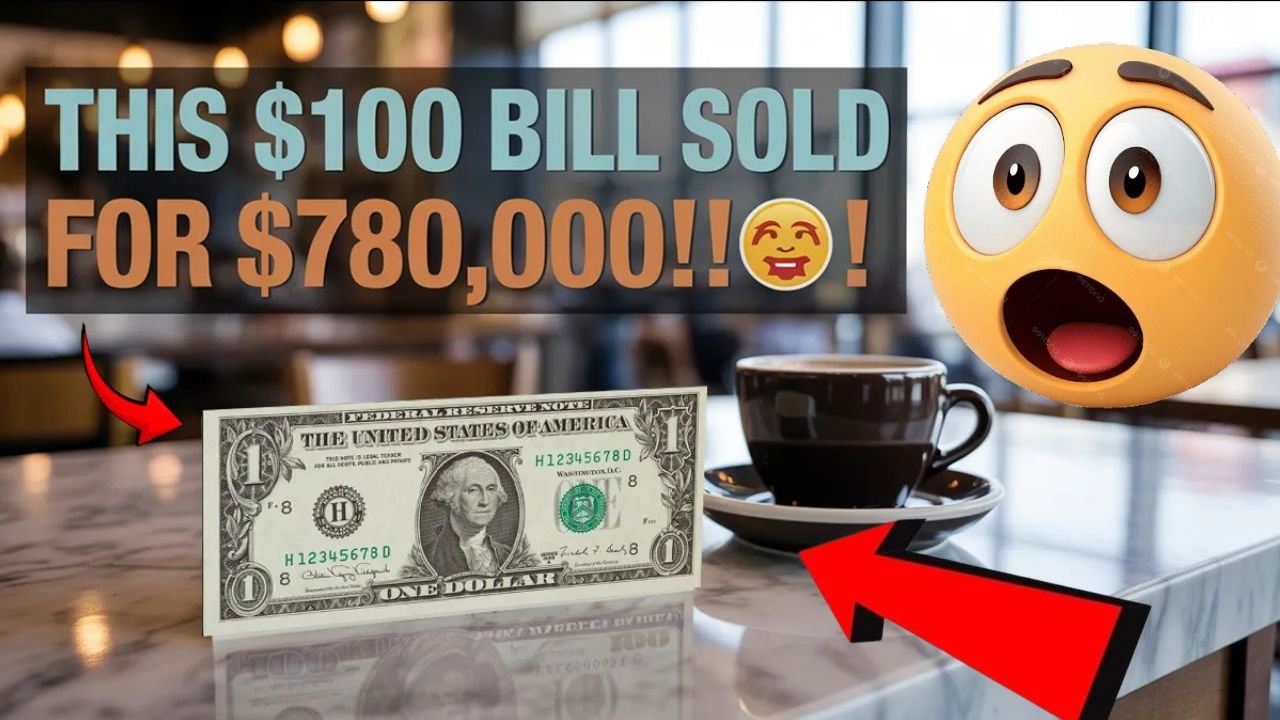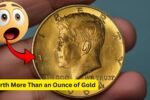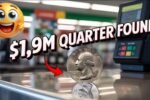It began just like any other day. A man walked into a coffee shop and paid for his drink with a $100 bill. There was nothing strange about the transaction — at least not at first glance. The cashier accepted the money, gave back the change, and the customer left. But what happened next turned that simple purchase into one of the most unexpected financial stories in recent history.
What Made This $100 Bill So Special?
This wasn’t just any ordinary $100 bill. What made it so valuable was its serial number. On every dollar bill, there is a unique serial number printed on the front. Most people don’t pay attention to it, but collectors do. In this case, the serial number on this bill was “01234567.” This is what’s known as a “ladder serial number.”
A ladder serial is extremely rare because the digits are arranged in a perfect numerical order — just like the rungs of a ladder. There are only one in every 96 million bills that have this kind of perfect sequence. That’s why collectors are willing to pay big money for them.
From Coffee Shop to Collector’s Dream
After the $100 bill was used at the coffee shop, the cashier noticed the unique serial number and decided to keep it. Realizing its rarity, they shared it with a local currency collector. Word spread quickly among the currency collecting community. What started as just another payment for a cup of coffee turned into a mini gold rush.
Soon, the bill was sold privately, and then listed for auction. At each step, its value kept increasing. People from around the world started placing bids. In the end, the ladder-serial bill sold for a jaw-dropping $780,000 at a major currency auction.
Why Do People Pay So Much for Rare Bills?
You might wonder why someone would pay almost a million dollars for a $100 bill. The answer lies in rarity and uniqueness. Just like rare stamps, coins, or sports cards, some people collect paper money with unique features. The more perfect or rare the serial number is, the more desirable the bill becomes.
Ladder serials, repeating numbers, palindromes, and “birthday” serials (that match actual birth dates) are especially popular among collectors. A bill with a rare serial is no longer just money — it becomes a collector’s item, a piece of history, and even a form of art for some.
What Is a Ladder Serial Number?
Let’s understand what a ladder serial is through a small example. Imagine the serial number on a bill looks like this: 01234567 or 12345678. That means each digit follows the previous one in exact order, like steps on a ladder. Such a clean, perfect sequence is incredibly rare. And the more perfect the pattern, the higher its value.
Here’s a table that shows the difference between a normal serial number and rare ones:
| Serial Number Type | Example | Rarity Level | Collector Value |
|---|---|---|---|
| Normal Serial | G51928473A | Common | Face value only |
| Ladder Serial | 01234567 | Extremely Rare | Very High |
| Repeating Serial | 77777777 | Very Rare | High |
| Birthday Serial | 07042000 | Depends on match | Medium to High |
The Fascination With Money That’s More Than Money
To most people, money is just something we use every day. But to collectors, some pieces of currency tell a story. They represent a moment in time, a design rarity, or even a printing accident. Bills with rare serial numbers are like treasures hidden in plain sight. Anyone could be carrying one in their wallet right now without even realizing it.
What Should You Look For in Your Wallet?
If this story has you curious, it might be time to check your own cash. Take a closer look at the serial numbers on your bills. Is there a pattern? Are the numbers repeating, in order, or significant in some way? While most bills won’t be worth more than their face value, some rare ones could fetch hundreds, thousands, or even more.
Many collectors start simply by noticing interesting patterns in their change or cash. Over time, this curiosity can turn into a hobby — and sometimes even a very profitable one.
FAQs
Q: What is a ladder serial number?
A ladder serial number is when the digits on a bill’s serial number go in perfect order, like 01234567. It’s very rare and highly valuable to collectors.
Q: Why did this $100 bill sell for $780,000?
Because its serial number was extremely rare — a perfect ladder — and collectors were willing to pay a high price for it.
Q: Can any $100 bill be worth more than its face value?
Yes, if it has a rare or interesting serial number. Things like ladders, repeated numbers, or unique sequences can make a bill more valuable.
Q: How can I check if my bill is rare?
Look at the serial number and see if it has any patterns. You can also compare it with examples online or ask a collector.




